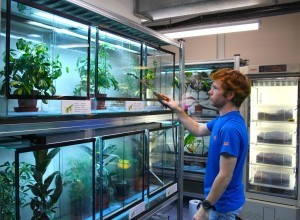Ex situ conservation of a threatened amphibian species should be considered a necessity when in situ conservation cannot by itself ensure the survival of a species and its ecosystem. Institutions considering the development of an amphibian ex situ conservation program should be guided by the results of conservation needs assessments when choosing species for management. Before captive programs are established, program managers should consider all of the following aspects:
 Amphibian Husbandry
Amphibian Husbandry- Establishing Programs
- Species Knowledge
- Adequate Resources
- Taxon Management
- Founder Animals
- Husbandry Skills
- Husbandry Standards
- Conservation Needs Assessments
We also have a directory of contact details for experts in a wide range of fields related to captive amphibian programs. It is intended to benefit anyone who is involved with conservation programs for captive amphibians. The progress of programs should be monitored regularly, with progress, success and any failures documented and shared for the benefit of other program managers. The AArk manages an online database which includes updates on the progress of ex situ rescue and research programs. Model programs are considered to be those that are based within the range country; and the population being managed is housed in isolation from other populations occurring outside its range. Recycled and converted shipping containers are an ideal, and cost-effective way to create facilities for amphibian programs, and these are now in use by a wide range of organizations around the world.













